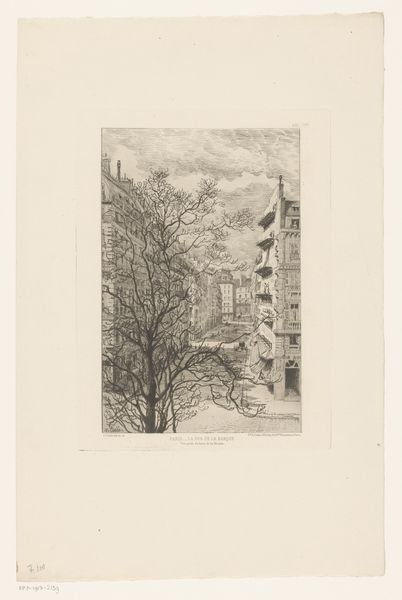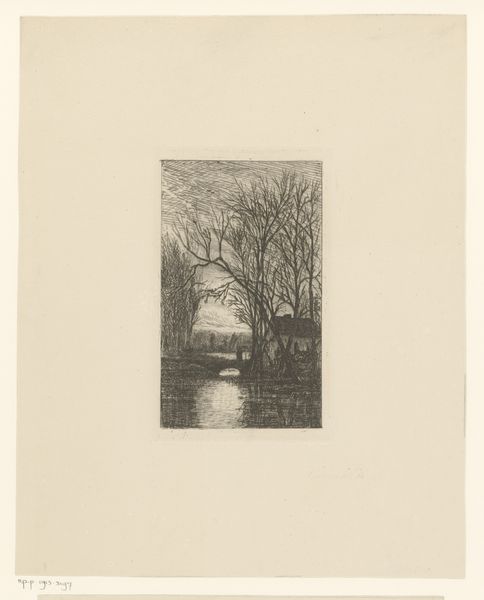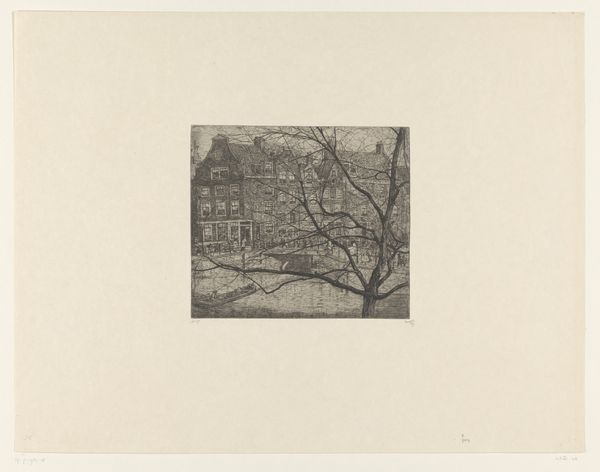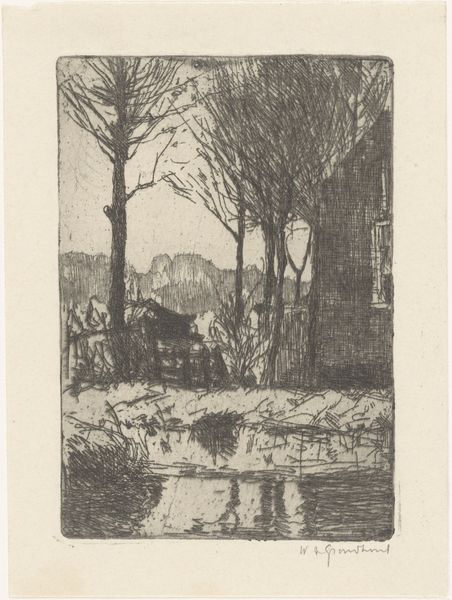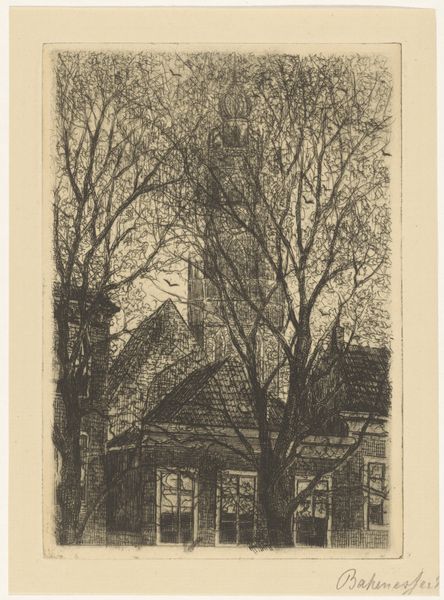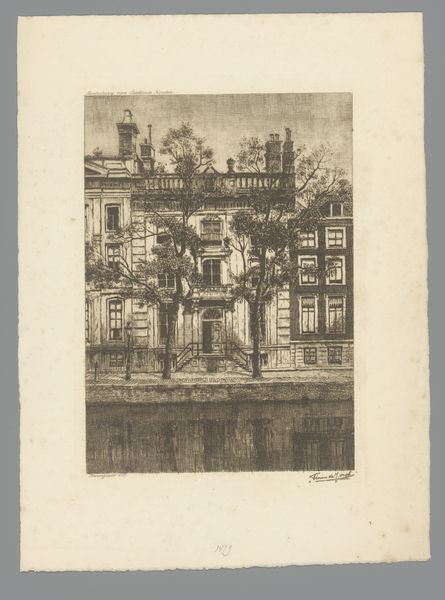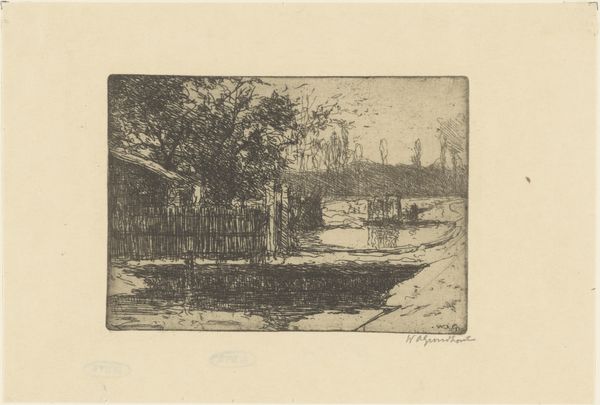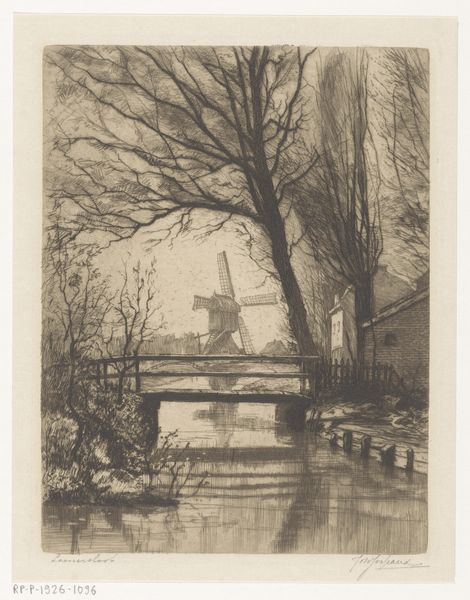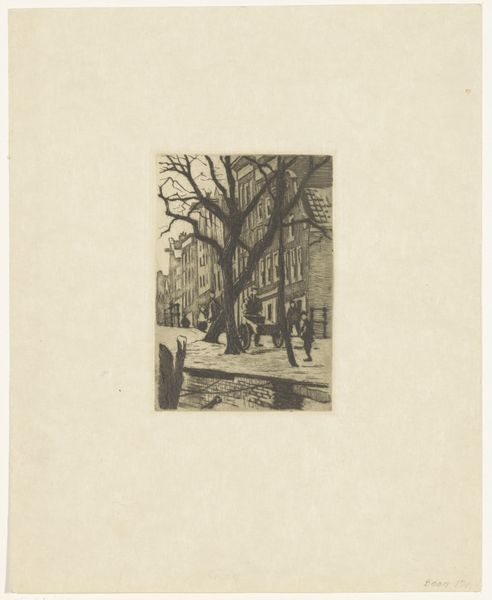
Dimensions: height 273 mm, width 198 mm
Copyright: Rijks Museum: Open Domain
Curator: This is Pieter Dupont's etching from 1895, titled "Grachtenhuizen met halsgevels in Amsterdam," depicting canal houses in Amsterdam. Editor: Immediately, I'm struck by the somber mood, almost ghostly, with the stark, bare tree dominating the foreground. Curator: Yes, the use of etching really emphasizes that quality. We see a skillful depiction of urban life, captured through the specific technique of printmaking. Consider the role of etching as a method of reproduction – creating multiples of an image allows for broader circulation and accessibility to art. Editor: It’s as if the city itself is a character here. It almost reminds me of a stage set. And the figures along the canal – are they drawn from life, do you think, or types? Curator: Probably both. Dupont meticulously renders architectural details – notice the 'halsgevels,' the neck gables which are so characteristic of Amsterdam architecture, while suggesting daily life happening below. This focus underscores the intersection of urban development and lived experience, all processed through the specific material of the etching plate. The materiality becomes a key component of conveying a particular moment. Editor: It feels quite intimate for a cityscape. Like a stolen glance through the bare branches of that gorgeous, almost menacing tree. Do you think Dupont was intentionally referencing the Dutch Golden Age with this technique? Curator: Certainly the Dutch Golden Age had an impact on the artist. Consider how Dutch art served varied functions for trade and the emerging middle class; works like this reflect and shaped civic identity and emerging modern values through visual representation and distribution. The etching medium aligns this piece with practices surrounding both art and dissemination of information. Editor: That bare tree feels incredibly present; so strong! The city almost fades to a backdrop compared to this tree dominating the foreground and my view. Curator: True! And consider too the kind of labor involved. It is also the artist choosing to depict, to frame, certain perspectives within the city, shaping a very particular relationship between the built environment, social life, and the art market. Editor: I'll never look at an etching the same way again. I mean, the details about the artist's intention in rendering Amsterdam’s streets is fascinating, knowing its ties to both trade and self-expression in this detailed medium of choice!
Comments
No comments
Be the first to comment and join the conversation on the ultimate creative platform.

